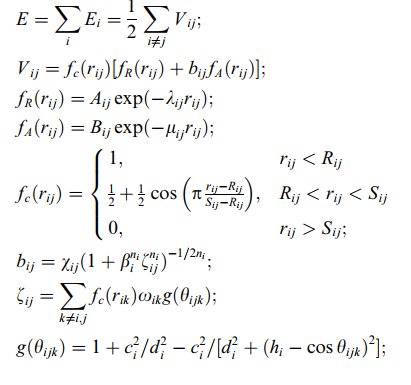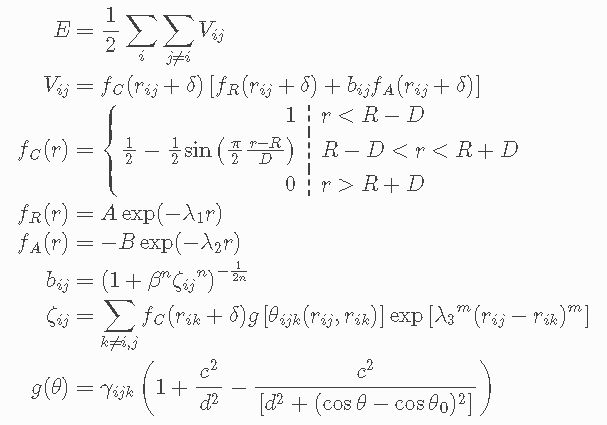Hello,
I have some questions about the form of the Tersoff potential parameters used in GULP. I have seen a couple of different form of the equations in literature for Tersoff potential (please see the attached images). Now, let’s say we have two atom types (Si and O for example) in the system. In one of the form of the equations, the parameters such as n, beta,c,d, and h are not symmetric for cross types of atoms (for example: will be different for Si-O vs O-Si terms). My questions are:
-
Which form does GULP exactly use among these two?
-
Looks like, if I use the “combine sub-option” in the " botwobody option", then symmetric values of the parameters will be generated using the mixing rule. However, if I do not want to use that and still want to keep the symmetry, do I need to explicitly list the different cross body terms as equal numeric values? (In the previous example: Should I list the Si-O and O-Si terms separately? or just listing one of them like Si-O will suffice?)
Any suggestions will be really helpful.
Thanks in advance.
Sincerely
Shoieb Ahmed Chowdhury

